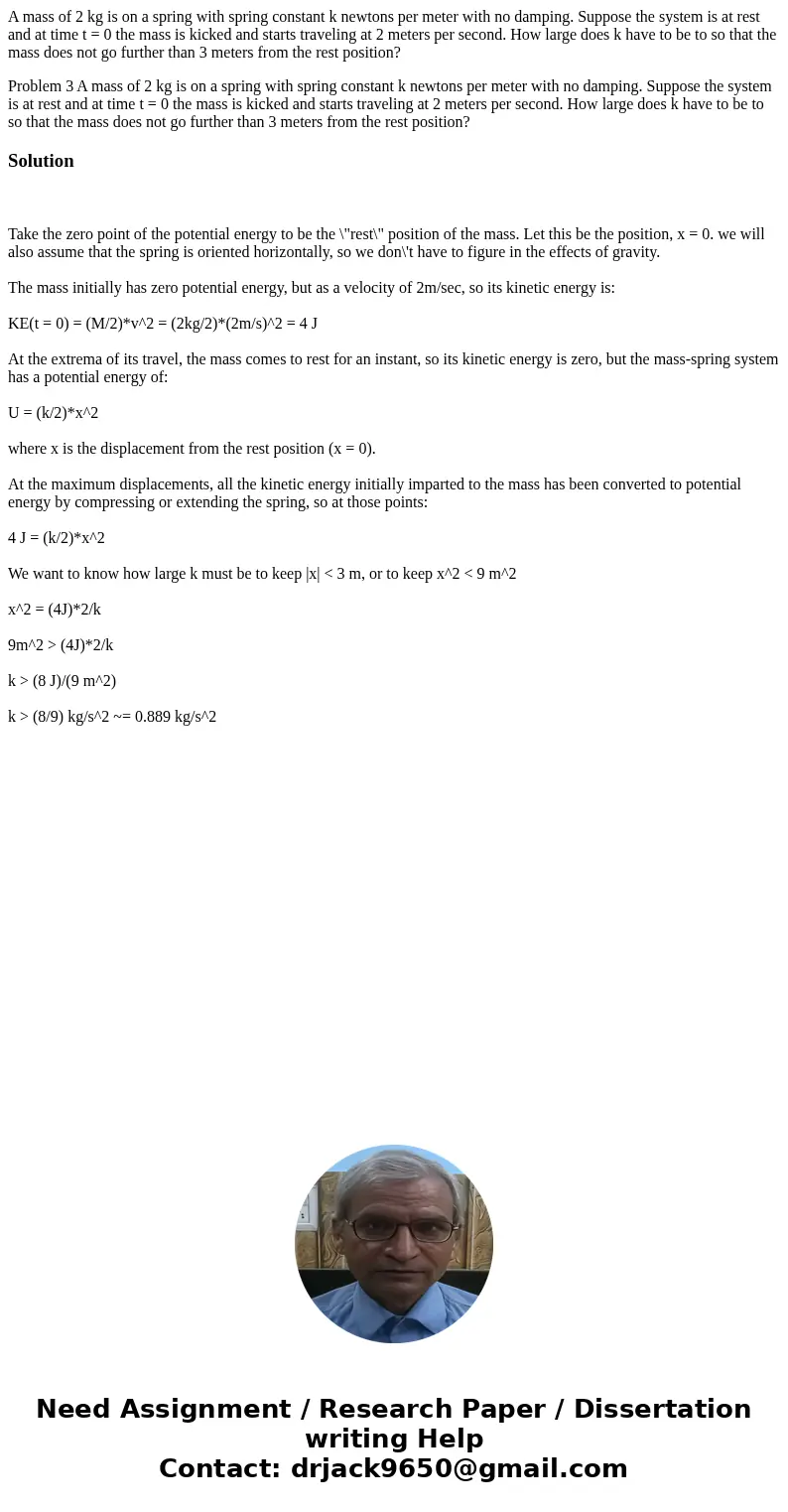A mass of 2 kg is on a spring with spring constant k newtons
A mass of 2 kg is on a spring with spring constant k newtons per meter with no damping. Suppose the system is at rest and at time t = 0 the mass is kicked and starts traveling at 2 meters per second. How large does k have to be to so that the mass does not go further than 3 meters from the rest position?
Problem 3 A mass of 2 kg is on a spring with spring constant k newtons per meter with no damping. Suppose the system is at rest and at time t = 0 the mass is kicked and starts traveling at 2 meters per second. How large does k have to be to so that the mass does not go further than 3 meters from the rest position?Solution
Take the zero point of the potential energy to be the \"rest\" position of the mass. Let this be the position, x = 0. we will also assume that the spring is oriented horizontally, so we don\'t have to figure in the effects of gravity.
The mass initially has zero potential energy, but as a velocity of 2m/sec, so its kinetic energy is:
KE(t = 0) = (M/2)*v^2 = (2kg/2)*(2m/s)^2 = 4 J
At the extrema of its travel, the mass comes to rest for an instant, so its kinetic energy is zero, but the mass-spring system has a potential energy of:
U = (k/2)*x^2
where x is the displacement from the rest position (x = 0).
At the maximum displacements, all the kinetic energy initially imparted to the mass has been converted to potential energy by compressing or extending the spring, so at those points:
4 J = (k/2)*x^2
We want to know how large k must be to keep |x| < 3 m, or to keep x^2 < 9 m^2
x^2 = (4J)*2/k
9m^2 > (4J)*2/k
k > (8 J)/(9 m^2)
k > (8/9) kg/s^2 ~= 0.889 kg/s^2

 Homework Sourse
Homework Sourse